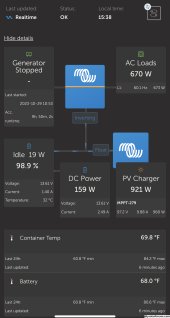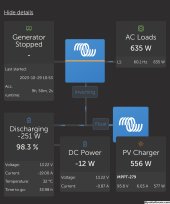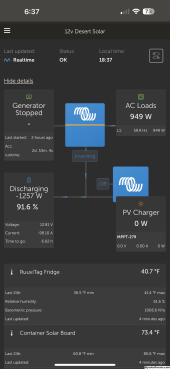I’m running a couple fans, dorm fridge, and inverter style 10k btu Air Conditioner off my multiplus 2k (12v). VRM shows I’m using about 670 watts on the AC load. I have a victron 150/100 CC and VRM shows it’s pulling in about 920 watts to power those loads and keep my battery at its float level of 13.6v. That’s about 72% efficiency for an inverter/charger that claims 95% efficiency. The dc loads jumps around between10w to 160w which is weird because the only thing I have connected to the dc fuse block is the cerbo. The PV input doesn’t fluctuate like the dc load does. Equipment is in an air controlled room sitting at about 68F. Outside temp is 78F. Is this normal or should I start trying to figure out where the efficiency loss is? Using 2/0 cable from three 206ah SOK 12v batteries. 4AWG cable coming from the victron CC. All cables and connection points are either cool or slightly warm to the touch. Something just seems off.







